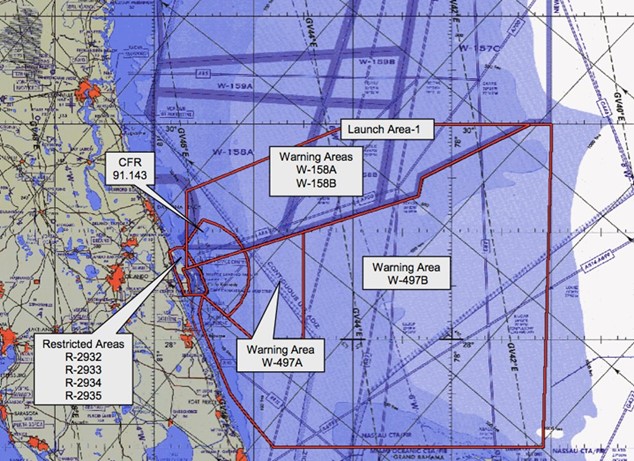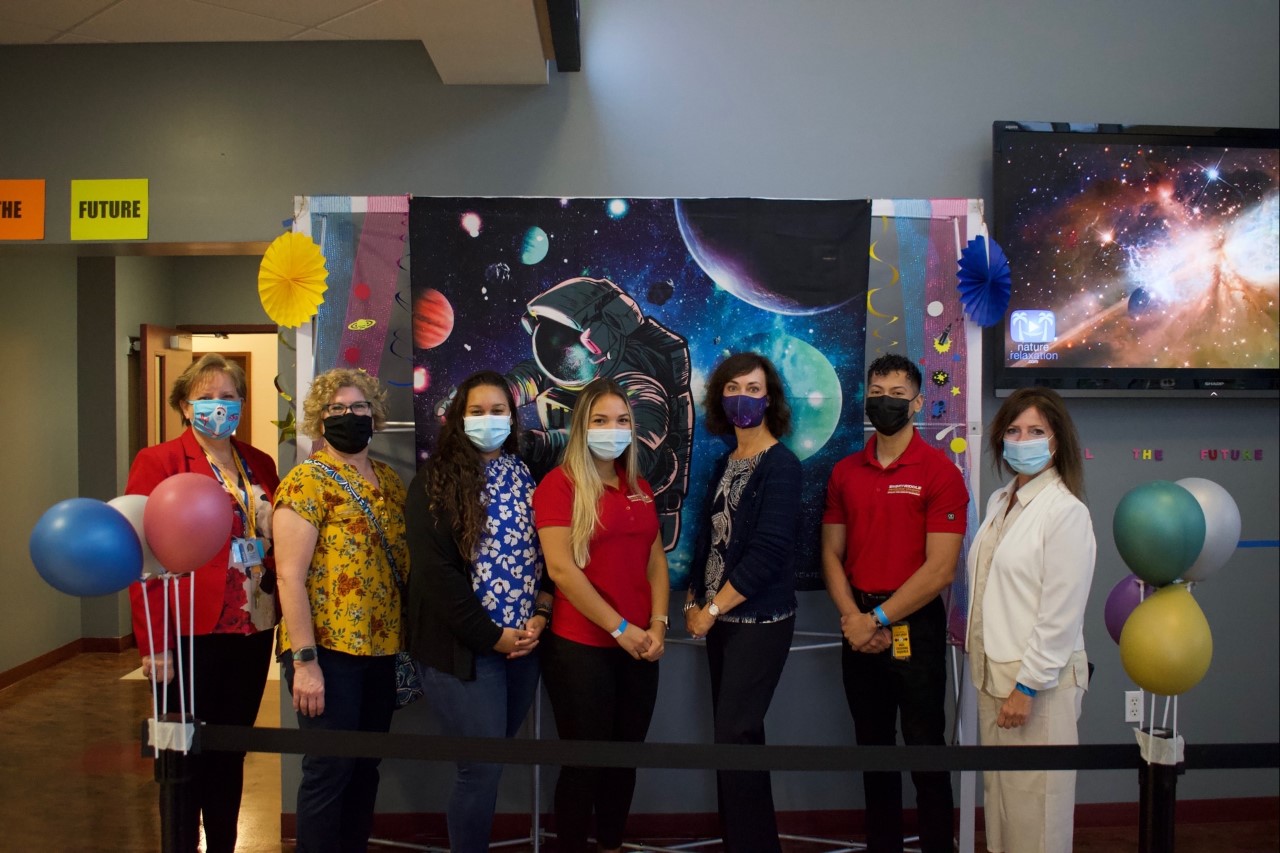21-22 of 22 results
-
Integration of the Emerging Space Ecosystem into the National Airspace System (NAS): Simulation and Analysis of Impacts and Solutions, NASA Florida Space Grant Consortium
CO-I Maxwell Cannon
CO-I Noah Eudy

Currently, there is limited, but ongoing, simulation research on the integration of space operations into the NAS that focuses on impacts to other constituents and in finding solutions (cf, Tinoco, et al., 2019; Colvin & Alonso, 2015). Particularly, academic research based on modeling and simulation is quite minimal. Thus, the first objective of this research was to continue our current efforts and develop additional simulation models to analyze the potential impacts of launch and re-entry activities on key NAS stakeholder operations, particularly those of airlines, but also general aviation. NASA KSC/Cape Canaveral Air Force Station (CCAFS) clearly play a critical role in both the state of Florida and in our nation’s space ecosystem. As such, our area of interest was defined as Cape Canaveral, Florida. We built on our previous simulation research that centered on horizonal take-off and landing of Concept Z reusable launch vehicles (RLV) at Cecil Air and Space Port in Jacksonville, FL (cf, Tinoco et al (2019); Tinoco et al, pending) and our understanding of air traffic routes on the heavily traveled Eastern Seaboard.
Particularly in the United States (U.S.), the number of spaceports is growing as both public and private entities are examining commercialized space transportation as a means of revenue and economic growth. Conversely, stakeholders that lie outside the space industry, such as those in our nation’s aviation sector, view space transportation with caution, concerned about the negative effects on their own operations as space launch and return activities become the norm rather than the exception. These non-space stakeholders will directly and indirectly impact the pace and development of the U.S. space economy. Thus, safe, equitable, efficient and effective integration of space activities into the NAS is critical to all stakeholders, influencing the realized economic and non-economic benefits that these stakeholders aspire. Clearly, the new space economy will ultimately profit us all as a nation. However, this new path of growth must be examined through multiple lenses in order to achieve maximum benefit for everyone. As such, our target audience includes all stakeholders that are impacted by or can impact airspace closures due to space activities whether they be the launch providers, airlines, NASA, the US Air Force, the FAA, general aviation, policy makers, communities, and general public.
Currently, there is limited, but ongoing, simulation research on the integration of space operations into the NAS that focuses on impacts to other constituents and in finding solutions (cf, Tinoco, et al., 2019; Colvin & Alonso, 2015). Particularly, academic research based on modeling and simulation is quite minimal. Thus, the first objective of this research was to continue our current efforts and develop additional simulation models to analyze the potential impacts of launch and re-entry activities on key NAS stakeholder operations, particularly those of airlines, but also general aviation. NASA KSC/Cape Canaveral Air Force Station (CCAFS) clearly play a critical role in both the state of Florida and in our nation’s space ecosystem. As such, our area of interest was defined as Cape Canaveral, Florida. We built on our previous simulation research that centered on horizonal take-off and landing of Concept Z reusable launch vehicles (RLV) at Cecil Air and Space Port in Jacksonville, FL (cf, Tinoco et al (2019); Tinoco et al, pending) and our understanding of air traffic routes on the heavily traveled Eastern Seaboard.
In order to meet the first objective, the student researchers specifically targeted the following questions with respect to Cape Canaveral space activities:
1) What are the most common airspace closures
2) What times are they closed and for how long?
3) What number of planes fly through this airspace during the time and space of closure?
4) What type of air traffic is impacted (commercial, general aviation)?
The second objective was to work on finding solutions that are generalizable across the NAS, irrespective of spaceport location. For this objective, the researchers asked:
1) What are the rerouting options?
2) What are the impacts if we vary time of day and size of closure window?
3) What other solutions are available?
For this research effort, we focused on vertical launches using Falcon 9 airspace closure data from 2019, as well as horizontal landings of the Space Shuttle at Kennedy Space Center (KSC) Shuttle Landing Facility (SLF)[1] using historical shuttle airspace closure data. For the latter, we chose to examine horizontal arrival operations as the LLF prepares to accept landings of the Sierra Nevada Dream Chaser, following proper site operator licensing for Space Florida. We also considered the landing of the X-37B.
For our simulation software, we used NASA Future Air Traffic Management (ATM) Concepts Evaluation Tool (FACET) version 19.0 with NAS (National Airspace System) Constraint Evaluation and Notification Tool (NASCENT) version 19.03. The first phase included understanding the baseline model, representing the existing NAS conditions without space launch/landing operations at Cape Canaveral, Florida. Our database was that of real air traffic on March 30, 2016 (a “no launch” date) provided by NASA AMES for use with FACET. In the second phase, closed airspace, defined by historic NOTAMs, allowed us to identify how many and what type of air traffic would be impacted by the temporary flight restrictions (TFRs) in terms of time and space during launch/landing activities.
[1] Also referred to as the Launch Landing Facility (LLF), operated and managed by Space Florida.
Categories: Faculty-Staff
-
Spaceports: Portals to the Universe, NASA Florida Space Grant Consortium
CO-I Kassidy Moragne
CO-I Jetro Gallo
CO-I Alexandria Cogdell

Merriam-Webster Dictionary (2020) defines a spaceport as “an installation for testing and launching spacecraft,” but spaceports are so much more than a slab or runway and represent an essential component of the entire space industry ecosystem (e.g. Tinoco, et al 2020). Without spaceports, there is no spaceflight. There are no astronauts. There are no satellites. There is no International Space Station. And there is no Artemis and no expedition to Mars.
A review of online learning resources for children, parents, and teachers reveals instructions and learning tools for wide range of topics including rockets, spacecraft, satellites, planetary and lunar land vehicles; propulsion systems; planets, moons, and solar systems; spacesuits, among others. Yet, no resources were found on spaceports and spaceport infrastructure, the very foundation of spaceflight.
The intent of this effort is to build an education curriculum on spaceports that enlightens children, teachers, and families on spaceports and the infrastructure needed to support the safe integration, launch, and return of various vehicles, crew, and payloads. Many children believe that space is exclusively the domain of astronauts, engineers, or scientists (e.g., The LEGO Group 2019). Educators and parents are often of the same mindset. But space is for everyone and the careers associated with the space economy are wide and varied. Spaceports are just one domain where many individuals contribute to the success of a space program or initiative, each a valuable member of this unique sector. The more our younger populations learn of the different areas of the space ecosystem and the associated types of jobs, the better we all will be in building and sustaining a space economy fortified by a diverse workforce. Initially, the primary beneficiaries of this effort will be local school children and teachers in the state of Florida, particularly in Volusia County and other geographic areas of the Space Coast. Our hope is to engage economically disadvantages schools (with and without STEM programs) for a pilot study, allowing for a wider audience of interests and backgrounds. Our proposed effort has garnered the encouragement of Space Florida and resource support from Space Foundation and Volusia County Public Schools (VCPS) teachers.
Tinoco, J., Yu, C., Howard, D., Stilwell, R. (2020). Introduction to Spaceports: Runways to Space, Milton Park, Abingdon, Oxon: Routledge
The LEGO Group (2019). LEGO group kicks off global program to inspire the next generation of space explorers as NASA celebrates 50 years of moon landing. Retrieved from https://www.prnewswire.com/news-releases/lego-group-kicks-off-global-program-to-inspire-the-next-generation-of-space-explorers-as-nasa-celebrates-50-years-of-moon-landing-300885423.html
Merriam-Webster Dictionary (2020) defines a spaceport as “an installation for testing and launching spacecraft,” but spaceports are so much more than a slab or runway and represent an essential component of the entire space industry ecosystem (e.g. Tinoco, et al 2020). Without spaceports, there is no spaceflight. There are no astronauts. There are no satellites. There is no International Space Station. And there is no Artemis and no expedition to Mars.
A review of online learning resources for children, parents, and teachers reveals instructions and learning tools for wide range of topics including rockets, spacecraft, satellites, planetary and lunar land vehicles; propulsion systems; planets, moons, and solar systems; spacesuits, among others. Yet, no resources were found on spaceports and spaceport infrastructure, the very foundation of spaceflight.
The intent of this effort is to build an education curriculum on spaceports that enlightens children, teachers, and families on spaceports and the infrastructure needed to support the safe integration, launch, and return of various vehicles, crew, and payloads. Although further analysis is needed, the targeted segment of the population will likely be students in grades 2 through 8 and teachers that focus on this age group. Best teaching approaches and age-appropriate topics will be reviewed with local community teachers and industry to provide a well-rounded overview of spaceports, as well as types of jobs that are prevalent. Additional topics could include propellants, communications, security/cybersecurity, transportation and storage of components, airspace use, environmental and community considerations, space policies and laws, etc. The outcome of this effort will be a “ready to go” curriculum that can be provided either in the classroom or in a spring/summer camp environment. Further, considerations will be given to face-to-face and remote instruction. Teaching materials will be developed to aid educators and will be made available for use.
Many children believe that space is exclusively the domain of astronauts, engineers, or scientists (e.g., The LEGO Group 2019). Educators and parents are often of the same mindset. But space is for everyone and the careers associated with the space economy are wide and varied. Spaceports are just one domain where many individuals contribute to the success of a space program or initiative, each a valuable member of this unique sector. The more our younger populations learn of the different areas of the space ecosystem and the associated types of jobs, the better we all will be in building and sustaining a space economy fortified by a diverse workforce. Initially, the primary beneficiaries of this effort will be local school children and teachers in the state of Florida, particularly in Volusia County and other geographic areas of the Space Coast. Our hope is to engage economically disadvantages schools (with and without STEM programs) for a pilot study, allowing for a wider audience of interests and backgrounds. Our proposed effort has garnered the encouragement of Space Florida and resource support from Space Foundation and Volusia County Public Schools (VCPS) teachers.
Tinoco, J., Yu, C., Howard, D., Stilwell, R. (2020). Introduction to Spaceports: Runways to Space, Milton Park, Abingdon, Oxon: Routledge
The LEGO Group (2019). LEGO group kicks off global program to inspire the next generation of space explorers as NASA celebrates 50 years of moon landing. Retrieved from https://www.prnewswire.com/news-releases/lego-group-kicks-off-global-program-to-inspire-the-next-generation-of-space-explorers-as-nasa-celebrates-50-years-of-moon-landing-300885423.html
Categories: Faculty-Staff
21-22 of 22 results
